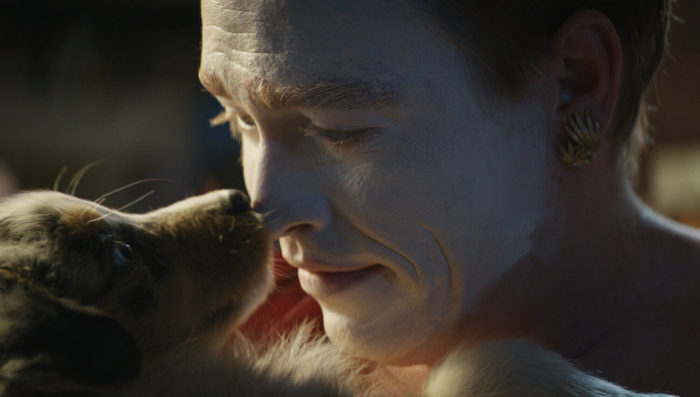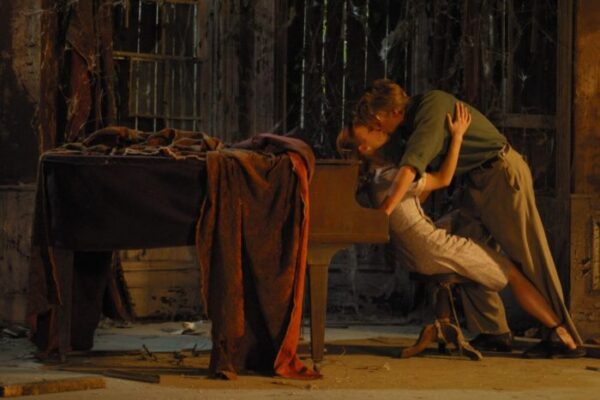Gone Girl: the meaning of the film, a description of the plot & ending. Gone Girl is a detective thriller filmed by cult director David Fincher, best known for his films Seven and Fight Club. Fincher’s hallmark is his amazing ability to simultaneously weave a whole lace of several plot threads, which only at the end are woven into a single line that puts everything in its place. The film Gone Girl, whose meaning is revealed towards the end, is no exception.
Description of the story
The plot of the film Gone Girl revolves around the relationship of a married couple – Nick and Amy, standing on the threshold of their five-year anniversary of living together. Returning home, Nick discovers that his wife has been kidnapped. The story gets a lot of publicity in the media, because Amy was the heroine of the popular book “Super Eni”, which her parents wrote for several years.
On a note! Charlize Theron, Reese Witherspoon, Natalie Portman, Rooney Mara and even Olivia Wilde could play the role of Amy. But the director settled on Rosamund Pike, preferring a less eminent actress.
It’s all the husband’s fault
As usual, Nick himself is the first to be suspected. Detective Rhonda Boni, who takes on the investigation, now and then stumbles upon facts that indirectly indicate the husband’s involvement in the disappearance of his wife:
- financial difficulties in the family and the loss of work by both spouses.
- Amy’s increased life insurance shortly before her disappearance.
- wife’s pregnancy in the absence of a desire to have children from her husband.
- credit card spending on purchases found at Nick’s sister Margot’s house.
- family crisis in a couple relationship.
And when Amy’s charred diary is found in Nick’s father’s house, the last words in which are “My husband will kill me” – there is no doubt. And at the same time, Nick has a suspicion that all this is Amy’s carefully planned game. A woman, taking revenge on her husband for treason, sets him up, accusing him of murder.
It’s all the wife’s fault
From this point on, the general flow of the film changes its direction. Until now, the story has been on behalf of Amy, with her view of what is happening. A sort of adaptation of the found diary. The viewer perceives her as a victim, a weak and unhappy woman. A cheating husband who does not pay attention to his wife, who does not want children, who uses forceful methods of influence is not a poor thing.
But as the story progresses, it turns out that the writing of this diary was only one part of the offended woman’s sinister plan for revenge. And all the facts from it should be divided by two, or even by three, in order to get a true picture of what is happening. Now the viewer’s sympathy is on Nick’s side. And cute Amy with the face of an angel and eyes of lakes turns into a psychopath with a rich imagination.
On a note! Gone Girl is not just based on the novel of the same name by Gillian Flynn. The author was directly involved in writing the screenplay. Moreover, she presented several options for endings in order to keep the intrigue and avoid spoilers before the release of the picture.
After planning her game step by step, Amy changes her appearance, hides in a cheap motel, and from there closely follows the development of events. Now she no longer seems to be the injured party, because facts from her biography emerge that reveal the true essence of this woman:
- #1 Tommy O’Hara’s falsely accused rape boyfriend;
- exposed as a lunatic who won’t let her in, #2 Daisy Colings’ boyfriend.
The second, by the way, still has warm feelings for Amy, so when trouble happens to her in a motel, he offers not only to stay at home, but also to try to start all over again.
How did the movie Gone Girl end?
The film Gone Girl, whose ending does not put a period, but only an ellipsis, prioritizes in a very original way. Nick’s smart lawyer advises him to try to win everyone’s trust with sincerity. That is, honestly tell about everything, without concealing either the facts of assault or treason. Tell, and then publicly repent, ending his confession with a passionate declaration of love for Amy. All this turns the public who believed in his guilt by 180 degrees. And not just the public. Amy, having heard his passionate speech on TV, is also inspired by his words and decides to return to “beloved”.
The scapegoat in this story is Daisy Colings. It is him that Amy accuses of kidnapping and repeated rape. And so that the truth does not spill out, the intriguer first rapes herself with a wine bottle. And then … kills an unlucky admirer. After that, spectacularly, all bloody, returns home and falls into the arms of her beloved husband in front of dozens of press cameras.
Gone Girl: the meaning of the film and the ending
Fincher masterfully plays with the emotions that arise during the viewing. At the beginning, sympathy is on the side of Amy, while the viewer is wary of Nick. But as the action develops, the arrow of preference turns in a diametrically opposite direction. Then back. Then back again. Until he freezes in bewilderment. Because there are no good and bad people in the film, there are no frankly hopeless killers and all-forgiving righteous people. It’s just people. People who find themselves in certain life situations.
The film Gone Girl, whose meaning is veiled behind the interweaving of plot threads, shows how the game can absorb. People who are used to playing roles hiding behind an ideal image turn life into a script:
- Amy, forced from childhood to play the role of Super Amy given to her by her parents.
- Nick, who likes the way he becomes next to his wife, meeting her requirements.
As a result, both accept each other’s rules of the game. Knowing all the ugly ins and outs of each other and at the same time remaining together, continuing a normal relationship. Or a relationship that only looks normal?







